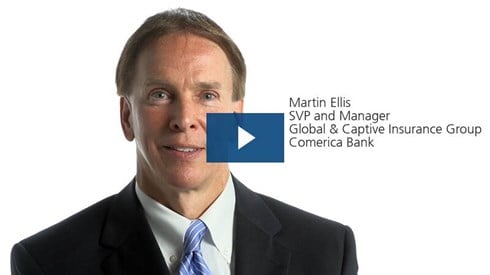Outlook for Insurers and the Economy in 2025: Insights from IRMI Webinar with Dr. Robert Hartwig

March 21, 2025

The International Risk Management Institute (IRMI) hosted the webinar "What's in Store for 2025? The Year Ahead for Insurers and the Economy," featuring Dr. Robert P. Hartwig, CPCU, clinical associate professor of finance and director of the Center for Risk and Uncertainty Management at the University of South Carolina. Dr. Hartwig provided an overview of key trends affecting the insurance industry, including underwriting performance, premium growth, catastrophe losses, economic developments, and regulatory factors.
Dr. Hartwig began by noting that while 2024 data is still being finalized, the property-casualty insurance industry's underwriting performance showed improvement, with an estimated combined ratio of approximately 98.5 to 99 for the year. This favorable result was largely driven by premium growth and improved loss ratios, particularly in personal lines, following years of adverse severity trends stemming from inflation and high catastrophe losses. However, projections for 2025 are contingent on normalized catastrophe losses, and early-year events suggest potential upward revisions may be necessary, per Dr. Hartwig.
Direct premiums written in 2024 likely exceeded $1 trillion, marking strong growth over the past several years, according to Dr. Hartwig. This growth is attributed to insurers' pricing responses to inflation and elevated catastrophe activity. Nevertheless, premium growth is expected to slow in 2025 to around 5 percent, subject to market conditions.
Specialty and excess and surplus (E&S) markets experienced particularly strong expansion, with growth rates outpacing the broader market. Dr. Hartwig noted that E&S markets grew at an annual rate of approximately 15 percent, reflecting challenges in traditional admitted markets, particularly in catastrophe-prone regions.
Despite the industry's top-line growth, profitability faced pressure in recent years due to high catastrophe losses and inflation. Net income and return on equity rebounded in 2024, supported by favorable underwriting conditions and higher investment income resulting from elevated interest rates, Dr. Hartwig said.
Credit rating downgrades were prevalent in 2023, largely concentrated in the personal lines segment. AM Best attributed these downgrades to several years of adverse performance rather than a single-year anomaly. Dr. Hartwig emphasized that industry capital and capacity experienced a decline of nearly 7 percent in 2022, only returning to 2021 levels by the end of 2024, according to AM Best.
Global reinsurance capital followed a similar pattern, contracting significantly in 2022 before recovering. This contributed to easing reinsurance pricing pressures, with property catastrophe reinsurance pricing decreasing by approximately 6 percent at the start of 2025, per Dr. Hartwig.
Catastrophe losses remain a persistent challenge. Dr. Hartwig cited the California wildfires in early 2025, which resulted in an estimated $32.5 billion in insured losses. The state's regulatory environment, particularly constraints on rate adjustments, exacerbated insurer exposure, contributing to a larger share of policies being shifted to the California FAIR Plan, according to Dr. Hartwig.
Long-term trends show that inflation-adjusted catastrophe losses continue to climb, with average annual insured losses in the 2020s so far exceeding $80 billion—more than double the level seen in the 2010s, per Dr. Hartwig. This increase is reflected in Dr. Hartwig's list of the most costly insured disasters, which includes recent events such as Hurricanes Helene and Milton and the California wildfires.
The homeowners insurance line has been particularly affected, with combined ratios averaging near 105 since 2017, compared to approximately 93 in the prior period. Inflation and catastrophe losses have driven premium increases, especially in coastal and wildfire-prone areas, according to Dr. Hartwig.
Turning to the broader economy, Dr. Hartwig observed that US economic growth has been resilient since the COVID-19 pandemic, avoiding a recession. However, the second half of 2025 may see a slowdown due to potential tariff impositions, followed by growth recovery in 2026 if tax cuts are extended, Dr. Hartwig said.
The unemployment rate remains low, around 4 percent, and consumer sentiment, while fluctuating due to inflation and policy concerns, continues to support economic stability. Inflationary pressures are expected to persist around 3 percent in 2025, influenced by tariffs and strong service sector price increases, including insurance, per Dr. Hartwig.
Supply chain issues and high input costs have kept construction materials and vehicle prices elevated, impacting residential construction and auto insurance sectors. Dr. Hartwig highlighted the close relationship between economic activity and insurance premium growth, emphasizing that construction activity and vehicle sales are significant drivers of exposure.
Medical cost inflation, after a temporary slowdown during COVID-19, has returned to levels comparable with overall inflation, influencing workers compensation and liability claim severities, according to Dr. Hartwig.
In the personal auto market, claim severities have continued rising, even as frequencies stabilize, with collision claim severities up over 30 percent since pre-COVID levels. Dr. Hartwig noted that recent rate actions have moderated loss ratios, though elevated costs persist.
Commercial lines renewal rates remained positive but softened toward the end of 2024, especially in workers compensation and directors and officers liability, per Dr. Hartwig. Commercial property and auto lines continue to experience rate increases, largely due to inflation and tort environment challenges.
Higher interest rates have bolstered investment income, supporting overall industry profitability. Dr. Hartwig pointed out that the industry's investment yield reached a 60-year low in 2021 but has since improved, aiding net income in offsetting underwriting challenges.
Finally, Dr. Hartwig addressed legal system abuse and social inflation as ongoing issues, particularly impacting casualty lines and exacerbating litigation costs. He concluded that while insurers have navigated significant challenges in recent years, regulatory, economic, and legal environments will continue shaping the outlook for 2025 and beyond.
For those interested in exploring additional risk and insurance topics, IRMI offers a range of webinars exclusively available to its members. Upcoming sessions for 2025 include topics such as transportation case law updates, technology errors and omissions and cyber-policy enhancements, property insurance captives, and cyber-insurance trends. Access to an archive of past webinars is also included. More information is available at IRMI Webinars.
March 21, 2025
